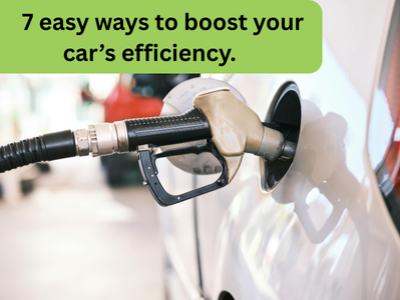
Top 7 Fuel-Saving Driving Habits Every Driver Should Know
Top 7 Fuel-Saving Driving Habits Every Motorist Should Know
With fuel prices always fluctuating, finding ways to make your tank last longer is more important than ever. Whether you're driving a traditional petrol or diesel vehicle, a hybrid, or even a plug-in hybrid, adopting smarter driving habits can lead to noticeable savings over time—not to mention reduced emissions and wear on your car.
Here are 7 simple fuel-saving habits every driver should know:
1. 🚦 Drive Smoothly
Rapid acceleration, hard braking, and sudden lane changes burn more fuel than you might think. Smooth, steady driving is not only safer—it’s also more efficient.
Tip:
Anticipate traffic ahead to avoid unnecessary braking and acceleration.
Use gentle throttle input and cruise at a consistent speed when possible.
2. 🛑 Avoid Excessive Idling
Idling uses more fuel than restarting your engine. If you’re stopped for more than a minute or two (say, waiting for someone or stuck at a train crossing), it’s more efficient to switch off the engine.
Tip:
Many newer vehicles (and nearly all hybrids) include stop/start systems to handle this automatically—make sure it's activated.
3. 💨 Lighten the Load
The more weight your car carries, the harder your engine has to work—and the more fuel it uses.
Tip:
Clear out your boot and remove heavy or unused items.
Only carry roof boxes, bike racks, or roof bars when you need them—they create wind resistance and reduce fuel economy.
4. 🔧 Keep Tyres Properly Inflated
Underinflated tyres increase rolling resistance, which means your car uses more fuel to move forward.
Tip:
Check tyre pressure monthly, especially before long trips.
Always inflate to the manufacturer’s recommended levels (found in your owner’s manual or inside the driver’s door).
5. ⚙️ Use Higher Gears When Appropriate
Driving in lower gears at high speeds burns more fuel. Most manual drivers can improve efficiency by shifting up earlier.
Tip:
Aim to change up gears at around 2,000–2,500 RPM in petrol cars, and 1,500–2,000 in diesel.
Automatics and hybrids often handle this themselves—but driving gently still helps!
6. 🌬️ Use Air Conditioning Wisely
Air conditioning can increase fuel consumption, especially at lower speeds. At higher speeds, however, driving with windows open can cause more drag than the A/C.
Tip:
Use A/C sparingly, especially in city traffic.
At low speeds, consider opening windows for ventilation instead.
7. 🔍 Keep Up with Regular Maintenance
A well-maintained car runs more efficiently. Dirty air filters, old spark plugs, and neglected oil changes all make your engine work harder and burn more fuel.
Tip:
Stick to your vehicle’s service schedule.
Keep your engine oil, filters, and fluids clean and topped up.
Bonus Tip for Hybrid Drivers
Hybrids and plug-in hybrids benefit even more from gentle acceleration and braking. Use regenerative braking to your advantage, and stay in EV mode when conditions allow.
✅ Small Changes, Big Savings
Even just a few of these habits can make a difference in your fuel economy—and over the course of a year, that can mean serious savings.
Want to make sure your car is running at peak efficiency? Book a service with us today, and we’ll help you get the most miles from every litre.

